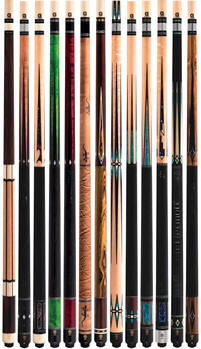
Although no one knows for certain who invented pool tables, it is clear that they have been around for quite some time. The earliest known records of the pool table date back to Northern Europe in the 1500s. The game gained popularity with all ages. It has been popularized in the United States for many decades.
The original version of pool was played with grass or a board having a hole at the center. It was played using object balls that had numbers from 1 to 15. The game was similar, except that you pushed the ball and not struck it. People started using a wooden stick, called a "mace", to strike the ball in the 1600s.
The game was improved with the addition of a cuestick, a wooden hoops, and the balls. The game became extremely popular in Europe, and it spread to America. It wasn't until the Industrial Revolution that this game became very popular around the world.

The game's history is a little hazy, but there are a number of people who have contributed to its development. First, King Louis XI from France is credited for inventing indoor billiard tables. The game also developed into a popular pastime in England, which grew in popularity after the Industrial Revolution. The French nobility loved the game.
The popularity of the game grew in America after it was first introduced. Many of the earliest settlers brought the game with them to America, and tournaments were held all over the country. It became very popular in finer saloons. The equipment was too expensive for the poorer classes.
The game's history was made even more complicated when ivory was introduced as a ball material. Original ivory was made from elephant tusks. Ivory became more fashionable in the 17th and 18th centuries, but it was not durable and was prone to cracking when struck with extreme force.
In the 1920s, Ivory pool balls were replaced with a new ball material. The new ball material, which was a mixture of camphor and nitrocellulose, could explode if struck with extreme force.

The composite ball was the new name for this ball material. The nitrocellulose wasn't very stable, but it was a more inexpensive replacement for ivory. The stick and the hoop were eventually abandoned. Also, the cue tip was changed to a leather tip which greatly improved ball hitting.
The game continued to develop, and in the late 1800s, it began to take off in the United States. John Wesley Hyatt was a billiards player who invented a ball of camphor and nitrogencellulose in the late 1870s. This new ball material was not very stable, and the ball could explode when struck with extreme force.
Michael Phelan, an accomplished pool player, was also a key figure in the game’s development. Phelan's father emigrated from Ireland to the United States in 1883, and Michael followed him into the pool hall business. Phelan eventually wrote a book called pool which inspired a new generation.